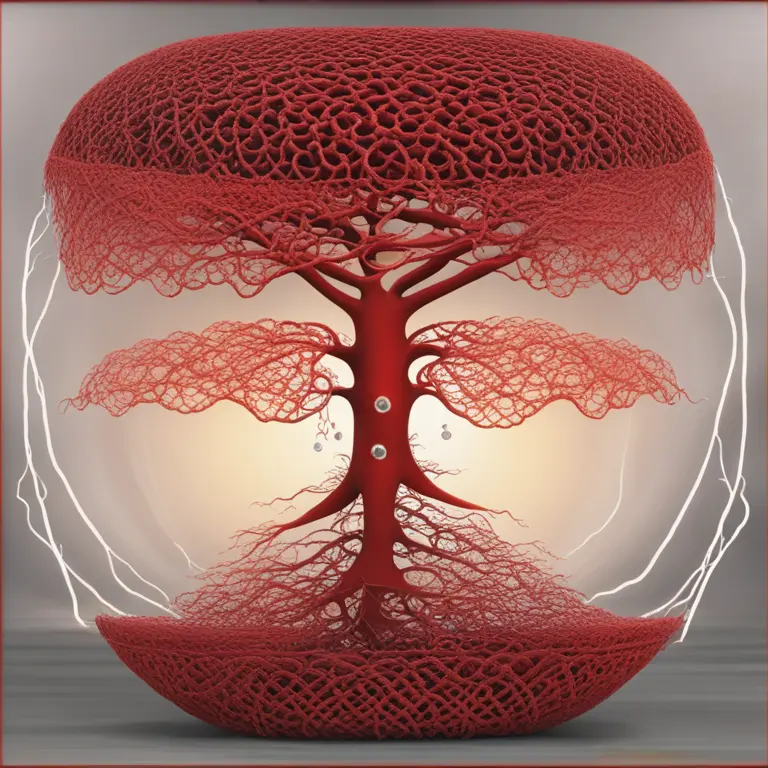
Calming Waves: Meditation Practices for Blood Pressure Control
Discover effective meditation techniques that aid in managing and lowering high blood pressure, offering a serene path to cardiovascular health.
article by Hina Kurosawa
Introduction to Meditation and Blood Pressure
Meditation is often touted for its stress-relieving benefits, but did you know it can also play a role in managing blood pressure? The link between the mind, body, and heart health has garnered significant attention, leading to the incorporation of mindfulness and meditation techniques in hypertension management plans. This article delves into how certain meditation practices can help reduce blood pressure and promote overall cardiovascular wellness, bringing tranquility to your circulatory system.

Understanding Blood Pressure and Stress
Blood pressure is the force that blood exerts on the walls of blood vessels, and its elevation can lead to a myriad of health issues. Stress is a contributor to high blood pressure, as it prompts the release of hormones that can temporarily increase blood pressure by causing your heart to beat faster and your blood vessels to narrow. Persistent stress means a sustained state of physiological arousal, which can, over time, contribute to chronic hypertension. Meditation helps combat this by inducing a state of relaxation, thereby reducing stress and aiding in blood pressure regulation.

Mindfulness Meditation: Being Present
Mindfulness meditation is a practice focused on being intensely aware of what you're sensing and feeling in the moment, without interpretation or judgment. Practicing mindfulness involves breathing methods, guided imagery, and other practices to relax the body and mind, which can help lower blood pressure. Studies point towards mindfulness meditation reducing systolic and diastolic blood pressure by improving the body's responsiveness to stress.

Transcendental Meditation: Beyond the Surface
Transcendental Meditation (TM) is a form of silent mantra meditation developed by Maharishi Mahesh Yogi. It involves the repetition of a personalized mantra in a specific manner. Research into TM has suggested that it may reduce heart disease risk factors, including hypertension. The American Heart Association has indicated that TM can have a beneficial effect on blood pressure, providing a worthwhile adjunctive therapy for individuals with high blood pressure.

Yoga Nidra: The Art of Conscious Relaxation
Yoga Nidra, also known as yogic sleep, is a meditation and conscious relaxation practice that is intended to induce total physical, mental, and emotional relaxation. Aside from its tranquil effects on the mind, Yoga Nidra can help regulate blood pressure. The autonomic nervous system is toned through regular practice, leading to improved heart rate variability and reduced levels of stress hormones, both of which play a role in managing hypertension.
Breathing Techniques: The Power of the Breath
Breathing exercises, or pranayama, are a core part of various meditation practices and have a direct and profound effect on blood pressure. Techniques like slow, deep breathing can activate the parasympathetic nervous system, which counteracts the stress response, reduces heart rate, and lowers blood pressure. A practice known as the 4-7-8 breath, for example, involves inhaling for 4 seconds, holding the breath for 7 seconds, and exhaling slowly for 8 seconds. Regular practice can be an effective tool in managing hypertension.
Guided Visualizations: Journey to Relaxation
Guided visualizations involve being led through a peaceful and calming story or scenario, often by a therapist or a recording, with the goal of evoking palpable feelings of relaxation. These visualizations can harness the body's natural relaxation response and have been shown to reduce blood pressure by alleviating stress. Imagining calming scenes, such as walking through a forest or sitting by a serene lake, can help shift your body to a state of calm and contribute to long-term blood pressure health.
Published: 2/12/2024
Modified: 2/12/2024
More predictions
Come back here soon to learn more about yourself and your future


Meditation: From Turmoil To Tranquility
James lived in the heart of the bustling city, surrounded by skyscrapers that seemed to touch the heavens and streets that never slept. Every morning, as the city roared to life, so did the storm inside James. A whirlwind of thoughts, worries, and fears that left him feeling trapped in his own mind. Deadlines, bills, relationship woes - the list seemed endless, and the weight of the world pressed heavily on his shoulders.


Meditation Explored: 10 Cutting-Edge Discoveries
Meditation, an age-old practice, has been undergoing a modern renaissance, with science diving deep into its mysteries. As researchers explore its intricacies, they continue to unveil fascinating facts that bridge ancient wisdom with contemporary discoveries.


The Benefits of Meditation Music
Discover the benefits of meditation music for enhancing mindfulness practices and spiritual alignment, while diving into the celestial influence on your inner peace journey.